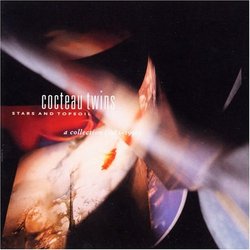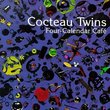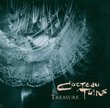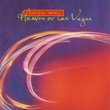| All Artists: Cocteau Twins Title: Stars & Topsoil-A Collection 1982-90 Members Wishing: 3 Total Copies: 0 Label: Musicrama/Koch Release Date: 10/24/2000 Album Type: Import Genres: Alternative Rock, Rock Styles: Hardcore & Punk, Indie & Lo-Fi, New Wave & Post-Punk Number of Discs: 1 SwapaCD Credits: 1 UPC: 632427757726 |
Search - Cocteau Twins :: Stars & Topsoil-A Collection 1982-90
 | Cocteau Twins Stars & Topsoil-A Collection 1982-90 Genres: Alternative Rock, Rock
'Stars And Topsoil, A Collection (1982-1990)' is the first 'best of' retrospective to span the entire period Scotland's ethereal alternative trio recorded for 4AD. 18 track overview of their first eight years together. Fea... more » |
Larger Image |
CD DetailsSynopsis
Album Description 'Stars And Topsoil, A Collection (1982-1990)' is the first 'best of' retrospective to span the entire period Scotland's ethereal alternative trio recorded for 4AD. 18 track overview of their first eight years together. Featured are tracks from their acclaimed albums as well as choice tunes from select singles. A perfect introduction to what is generally considered their best era. All tracks have been remastered as well. 2000 release. Standard jewel case. Similar CDs
|
CD ReviewsGreat songs, inferior set list cherubino | Houston, Texas United States | 10/13/2006 (4 out of 5 stars) "Ask any Cocteau Twin to choose 18 songs for a compilation, and you're likely to get a different response each time. Still, Stars and Topsoil leaves out too many first-rate songs to be considered truly representative collection. Let's start with track one. Why was Blind Dumb Deaf chosen to represent the Garlands album, and not Wax and Wane? Scanning though the rest of the list, I picked up on some glaring omissions, including From the Flagstones, Crushed, and Oomingmak. Furthermore, a proper collection would have encompassed the whole of their catalogue, not just up to 1990. Bluebeard, anyone? Sorry to say it, but I think this compilation, not being a true "best-of", is a waste of money for all but those completely unfamiliar with the Twins' music." The Future belongs to CT Olwe Melwasul | Duluth, MN United States | 12/23/2007 (5 out of 5 stars) "One hundred, two hundred years from now (if the human race lasts that long!) the CTs will be seen as one of the most influential music groups of this era. Musicologists will do for CT what they did for JS Bach, i.e., pull them out of relative obscurity to a dominant positiong in humanity's all-time music catalog. At his death somebody had ranked Bach as 100th in just Germany alone(!!!); but the sheer power of his music couldn't be supressed. Same with the CTs. Time will tell, but I'm fairly certain I'm right. In addition I'd say the CTs use the electric guitar in its most original, native, intended form. Similar users might be (at times) Neil Young, TD's Edgar Froese, and Michael Brook. Others, no matter how fleet of finger, are transcribers, appropriators of other instruments and styles. Not that there aren't brilliant musicians playing e-guitar, but the vast majority simply transcribe acoustic guitar...which results in the loud, bent, distorted acoustic guitar music we've come to love so much. The CT guitars (Guthrie mainly) rarely if ever borrow, transcribe, approriate, which is one of the freshest ingredients to the CT sound. As far as their originality is concerned, it borders on otherworldly. I run a little Gedanken-experiment on "rock genre" music: If you are familiar with Led Zepplin's "Battle of Evermore," there is a section towards the end where Plant goes off on a near psychotic screeching tangent. It's wonderful, breathtaking, a stroke of genius, etc. etc., but mainly totally out of left field. It's this song's extreme tangent-izing that is so much an Eno-esque "oblique strategy" that I use it as a measuring stick for all manner of genius oblique strategizing. I'm saying the CTs have this Battle of Evermore oblique tangent thing in spades! (I don't mention Eno because the musicologists already know about him!) Somehow the CTs pull out of the aether-void some of the most subtle and sublime tangents there have ever been. In classical music you hear this in some of the more modern French organ composers (Alain, Durufle, etc.) And of course, you can jump at any time into the big discussion of why humans such as the CTs create such music and why our affinity thereto. No doubt this is a mental phenomonon brain scientists will not wrest away from the mysticists for a long time to come."
|

 Track Listings (18) - Disc #1
Track Listings (18) - Disc #1



